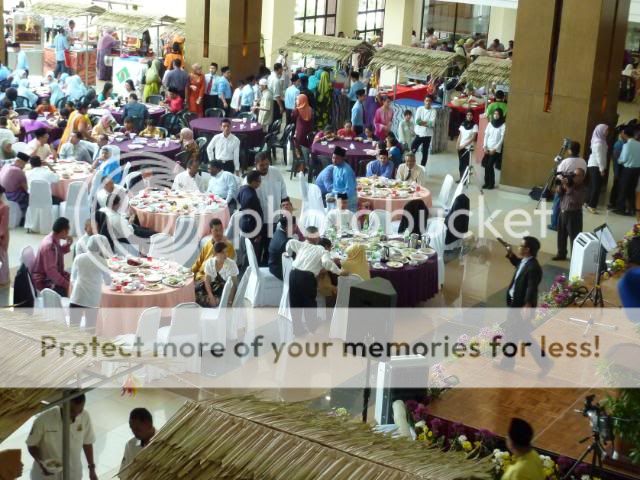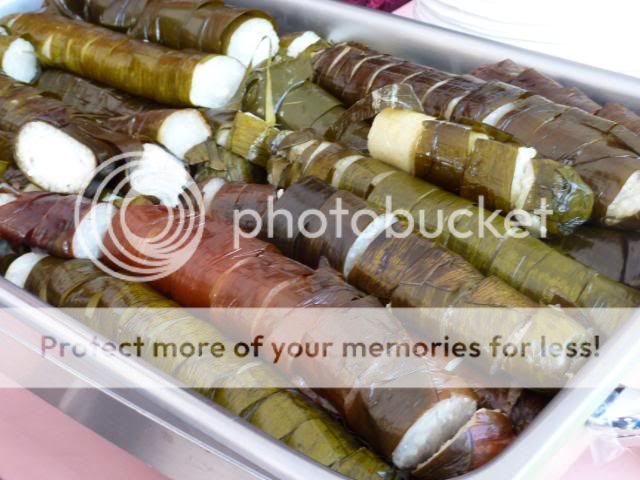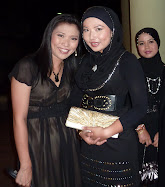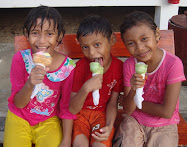 |
| Indoor Food Booths (and Entertainment) |
 |
| Tents (with fans) for Outdoor Raya Fests |
At the end of the fasting month of Ramadan, Malays in Malaysia will celebrate the end of
Eid al-Fitr with
Hari Raya open houses that consist of eating, visiting, and more eating. This year I attended 17 public and private
hari raya open houses. The public ones were hosted by various organisations to which I belong. The private ones are those hosted by colleagues and friends at their houses, and will be detailed in a separate blogpost.
If one works in a Malay organisation or company, certainly the invite will come for that organisation's open house. Some are held outdoors, under tent canopies fitted with fans. Some will be hosted indoors, with food booths surrounding the VIP seating. Most will have some type of "entertainment", but it won't be rock-n-roll! Singers, supported by either "Music-minus" backing tapes or small ensembles of musicians, will belt out evergreen favorites, including M. Nasir's "
Satu Hari, Hari Raya" and hits from Malaysia's sweetheart of singers
Datuk Siti Nurhaliza.
 |
| Ketupat rice |
 |
| Not Rock-n-Roll |
The college where I work has a vocational branch that hosted a Hari Raya feast, prepared by the students. One might think -student cooks?- but in fact this campus produces excellent meals. Before the feasting began, I made a circuit around to photograph some of the items on offer.
Typically, the main dishes will involve the various forms of rice and noodles. Some different ways of serving rice are:
-
nasi putih (plain white rice)
-
nasi minyak or
nasi tomato (oil or tomato rice)
-
nasi ketupat (rice cooked in triangular pandan-leaf wraps)
-
nasi lemang (rice steam cooked in bamboo tubes)
-nasi What is it?
 |
| Nasi What Is It? |
 |
| Lemang rice |
The noodles come in a wide variety, but I know them as white (plain wheat), yellow (wheat, but with added flavorings) and very thin
mee hoon noodles, which can be rice or mung bean flour.
Toppings are many and range in flavours, covering the taste range of sweet-to-sour, bitter-to-tart, and back again. Meat can be heavily spiced, such as rendang, or simply grilled, such as satay. Satay tends to be a crowd favorite, and most other food is ignored until diners have stacked multiple skewers of chicken or beef satay upon their plates.
 |
| Rush for the Satay |
 |
| Beef Rendang |
Apart from the eating, it is fun to chit-chat with colleagues. Female colleagues come dressed in brand-new
baju kurung, purchased especially for Hari Raya. Men wear the traditional Malay costume, with
baju Melayu,
songket (decorative blanket worn around the waist), and Islamic
songkok (black or white cap).
Basically, protocol for these functions is to arrive and wait for the VIP (very important people) and VVIP (very very important people) to arrive. VIPs need to arrive before VVIPs, in order to greet the VVIPs and also show
Who is Important. Once the situation of Importance Level has been established, eating commences along with the entertainment. ("Satu hari, Hari Raya.....")
 |
| Men's Outfits |
 |
| Women's Lineup |
I walk around, with my camera in hand. People eating intently, or chit-chatting, or taking photos of each other, are not always aware of other camera-people. This allows me to take photos of people in NON-poses. Some of the best photos are NON-poses. My favorite from the public Hari Raya fests that I attended are of a group of school girls. They spied me at the balcony railing overlooking the indoor fest and giggled as I took a photo. Smiling, I gave them the "thumb's up" signal, and they replied in kind. If pictures are worth a thousand words, then non-verbal smiles and gestures can be worth millions.
 |
| School girls giggle at the Orang Putih |

























I enjoy reading your observation..sir
ReplyDeleteTerima kasih abang.
ReplyDelete